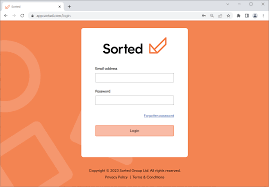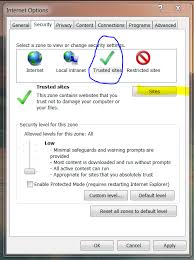As we navigate the vast expanse of the internet, it’s no secret that our every click is being monitored. Often, this surveillance is aimed at delivering personalised ads designed to entice us into spending more. However, there’s a darker side to this tracking; it can manipulate our political views or contribute to societal unrest. So why isn’t there stronger regulation to curb these practices?
Shouldn’t there be safeguards in place for everyone online, from the most novice user to the tech-savvy expert? The answer is yes, but the reality is far more complex. The very systems that enable tracking are also utilised for convenient third-party logins—what’s known as federated authentication.

The tricky part? Browsers are unable to differentiate between tracking mechanisms and those meant for secure logins; they appear identical on a technical level. This inherent similarity complicates any efforts to modify or eliminate these features more than one might anticipate.
The Paradox of Browser Tracking
Have you ever wondered about the enigmatic systems that come into play when you log onto a website? While they seem to enhance your online experience, they also raise significant concerns about privacy. Let’s take a moment to explore their origins.
The Internet was born from a research initiative where users were typically familiar with one another, forming a tight-knit community that embraced this novel technology. The World Wide Web emerged later but retained that exploratory spirit, fostering creativity and innovation by developing small applications—widgets—that users could adapt in countless ways.
However, the Internet—and, by extension, the Web—was created without robust mechanisms for automated trust. One notable innovation was the introduction of data storage within browsers, allowing developers to retain information locally and avoid repetitive requests for the exact details—a concept known as saving state. This approach also relied on IP addresses, which served as unique identifiers for each computer on the network, suggesting that only one user was likely accessing any given device at a time.
These foundational elements paved the way for various applications, from facilitating third-party logins to enabling targeted advertising based on individual preferences. But enough about history; let’s delve into how these systems function today.
From third-party cookies and IP tracking to browser fingerprinting techniques, these tools play a crucial role in ensuring seamless online interactions while simultaneously opening doors for tracking user behaviour. Grasping how these mechanisms work is essential for navigating today’s digital world effectively.

Navigating Third-Party Cookies and Privacy
Imagine a world where every time you visit a different page on the same website, you have to log in all over again. Frustrating, right? This is where HTTP cookies come into play. Often referred to as web cookies or browser cookies, these tiny snippets of data are generated by websites and stored on your device through your web browser. Their primary purpose is to enhance user experience (UX) by remembering information as you navigate from one page to another.
However, not all cookies are created equal. For this discussion, we’ll focus on two types: first-party and third-party cookies. First-party cookies serve a single domain, allowing it to keep track of your activity across its various pages without requiring constant re-entry of information. They’re exclusive to the domain that set them up—no other site can access the data contained within.
On the other hand, third-party cookies operate differently; multiple domains can access them. This can be beneficial in certain situations. Take CNN as an example—they own several sites like cnn.com and money.com. To ensure a seamless experience across their platforms, they utilise third-party cookies so that users enjoy consistent functionality no matter which site they visit under the CNN umbrella.

These third-party cookies also play a crucial role in security features such as logging out from services—when you choose to log out from one site, these cookies help identify what needs to be logged out across their network of sites. However, with many browsers moving away from supporting third-party cookies for privacy reasons, adapting these security measures has proven challenging for many websites; some have even abandoned efforts for a secure global logout altogether due to its complexity.
In this evolving landscape of online privacy and user experience, understanding how different types of cookies work becomes essential for both users and developers alike.
Navigating the Intricacies of Browser Fingerprints and IP Addresses
IP Addresses
For most individuals, the numerical address of a computer is something they rarely consider. However, devices such as your smartphone, tablet, and desktop communicate using these numbers, just like the servers hosting the websites you explore. These numerical identifiers are known as IP addresses, and they play a crucial role in directing Internet traffic to its intended destinations.

In the past, these addresses were closely associated with stationary computers. There were also sufficient addresses available for every device connected to the Internet. Under those circumstances, it was reasonable to think of an IP address as a reliable indicator of identity; if you knew someone’s IP address, you could confidently say that person had access to your computer.
Although our understanding of IP addresses has evolved and some previous assumptions no longer hold, there remains significant value in them. Many websites still implement access controls based on specific IP addresses. This approach offers users a seamless experience—there’s no need for any action on their part; everything functions effortlessly.
When you visit a website, your activity is logged automatically. These logs serve multiple purposes: they help identify and resolve issues while also providing insight into who is accessing the site. Moreover, if this data is shared behind the scenes, tracking a single IP address becomes akin to following footprints left in freshly fallen snow.
When you first set up a web browser, you likely customise it with various plug-ins, add-ons, and your favourite fonts, along with adjusting the settings to suit your preferences. Here’s something intriguing: this personalisation can create a remarkably distinct fingerprint that sets your browser apart from all the others out there. If you’re curious about how unique your browser configuration is, there are a couple of websites where you can find out—like https://amiunique.org and https://coveryourtracks.eff.org. These platforms will show you just how different your setup really is compared to the rest.

Whenever you visit a website, it often queries your browser about its configurations to enhance your user experience. For instance, the way information is displayed might vary depending on whether you’re using Chrome or Firefox. You might even encounter a notification if you’ve opted to block ads. While browser fingerprinting isn’t typically used for logging into sites, some enterprise applications may check for specific plug-ins or configurations as part of their access criteria.
Link Decoration and Bounces: The Intricacies of URL Tracking
But hold on—there’s even more to explore! One of the more nuanced yet pervasive aspects of trackers and authentication systems is link decoration. Often called navigation-based tracking, this technique involves appending additional information directly to the URL. This could include elements like an authentication token or specific query parameters that help the website tailor its display after you’ve conducted a product search.

When you click a link in an email, for instance, the address modifies to reflect the method you used, providing website owners with insights into which advertising strategies are effective. However, browser developers tread carefully when it comes to modifying link support. They must also navigate the challenge of distinguishing between links intended for tracking and those meant for other purposes.
The web experience we know relies heavily on link decoration, making it a favourite among many trackers. It’s a complex web of interactions that underscores how our online activities are monitored and analysed.
Bounces and Redirects: A Deeper Dive
In this post, we’ll delve into the concept of bounces, often referred to as redirects. These mechanisms are integral to our online experiences, much like the way links are styled. Bounces and redirects play a crucial role in facilitating essential login processes for protocols such as OAuth and SAML, which are utilised by countless websites across the internet.
The realm of authentication is intricate, involving multiple computers working behind the scenes to ensure you can log in seamlessly. Often operating from different domains, these systems must communicate effectively with one another. They exchange data back and forth until they can determine whether your login attempt should proceed or be halted.
However, it’s worth noting that bounces also serve a less noble purpose; they can be exploited by trackers attempting to circumvent third-party cookie restrictions previously discussed. Browsers aim to safeguard users by preventing sites from accessing cookies that they did not create themselves. In essence, cookies belong to the first party—meaning only the original site can use them—while third parties must seek alternative methods for tracking.

But what happens when two entities form a marketing partnership? They naturally want access to each other’s data! One straightforward solution is for the third party to masquerade as a first party. When a user directly visits a website—let’s call it Website A—that interaction establishes Website A as a first-party experience.
Now imagine if Website A has partnered with an advertiser from another site—Website B—and incorporates a tiny tracking pixel into its page. When users load this pixel, they inadvertently visit Website B as well. This allows Website B to set or modify its first-party cookies during each visit linked through its agreement with Website A. Consequently, this creates an extensive profile of users’ browsing habits and purchasing behaviours without them even realising it.
Browser developers can’t simply cast a spell with their keyboards to resolve every issue related to tracking. Turning off all tracking methods would inadvertently disrupt some of the web’s most essential security functionalities. Fortunately, efforts are underway at the World Wide Web Consortium (W3C) to navigate through this complex situation. Meanwhile, individual browser companies have been implementing their solutions. For instance, Apple has blocked third-party cookies for several years now. In 2023, Mozilla took a significant step by turning off these cookies by default for all users of Firefox. As for Google Chrome, they are still in the process of making adjustments; however, given their size—more significant than all other browser companies combined—they have much more at stake when it comes to these features.

How to Protect Login Data from Tracking in Maxthon Browser
1. Disable Third-Party Cookies:
Open Maxthon and navigate to your settings. Go to the Privacy section and turn off third-party cookies. This step helps prevent advertisers from tracking your login activities across different sites.

2. Activate Private Browsing Mode:
Consider using the Incognito or Private Browsing mode while logging into sites. This mode won’t save your browsing history or cookies after you close the window, providing an additional layer of privacy for your log-in sessions.
3. Utilize a VPN:
Install a reputable VPN service on your device. A virtual private network can mask your IP address and encrypt your internet traffic, making it difficult for trackers to monitor your online activity.
4. Adjust Privacy Settings:
In the settings menu, customise your privacy options by enabling Do Not Track requests. While not all websites honour this request, it adds another level of protection against unwanted tracking.
5. Limit Extensions and Add-ons:
Review installed extensions in Maxthon and remove any that are not essential, especially those that may compromise security. Ad blockers can also help reduce tracking advertisements that collect data during logins.

6. Regularly Clear Your Cache and Cookies:
Make it a habit to Clear browser cache and cookies regularly. Navigate to the Privacy section in settings for quick access to these tools. Doing so frequently minimises stored data that could be tracked later.
7. Use Strong Passwords with Password Managers:
Instead of saving passwords directly in the browser, consider utilising a dedicated password manager. These programs securely save and autofill passwords without leaving traces in Maxthon’s history.
8. Keep Your Browser Updated:
Regular updates ensure you have the latest security features and patches against vulnerabilities that could expose your login information.
By following these steps, you can significantly enhance your protection against tracking while using the Maxthon browser for sensitive logins.

